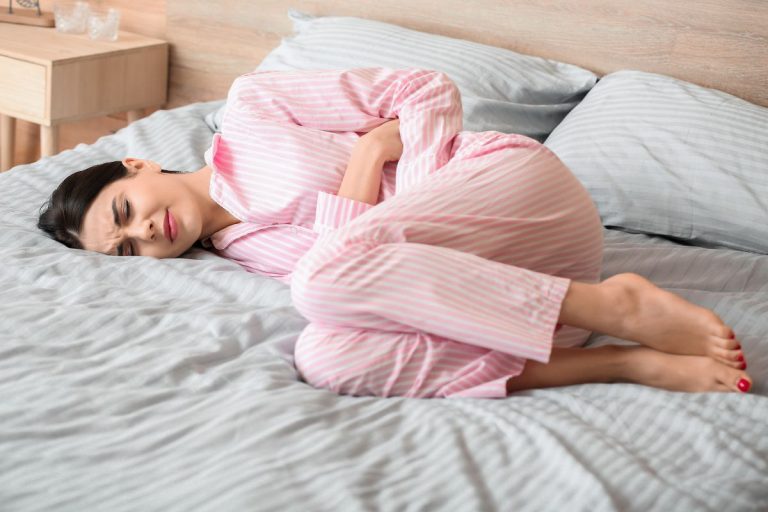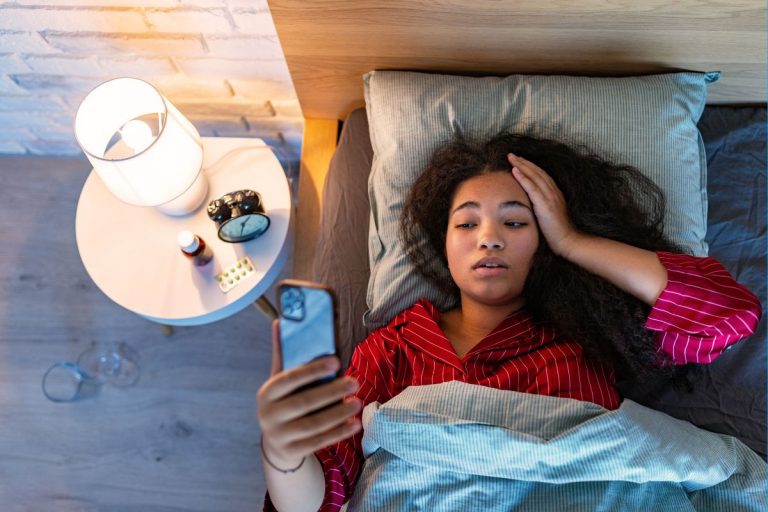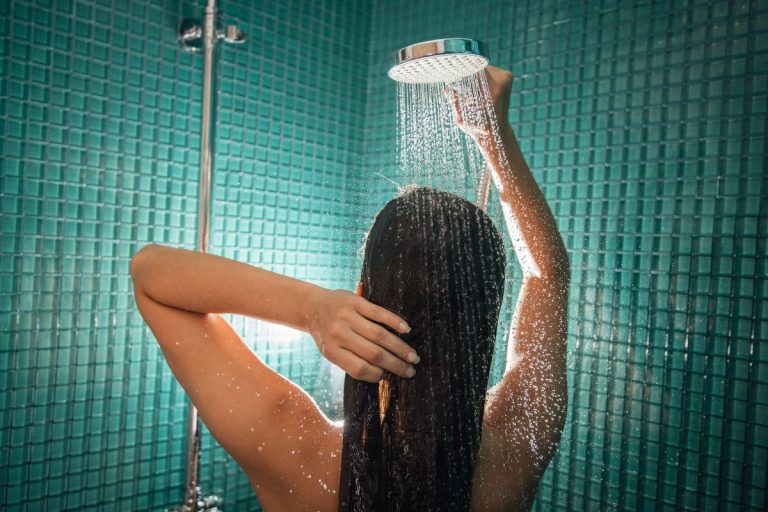Humidifiers are great devices for bedrooms. They keep the air moist and fresh when you go to sleep. It’s no secret that fresh and clean air is paramount for getting an adequate amount of restful sleep because our brain can use more fresh oxygen.
During the winter months, humidifiers have even greater application because heaters and central heating make the air drier which leads to a sore and dry throat, clogged nose, and other effects.
To keep the fresh air in the room optimal and ensure healthy sleep, a lot of people opt to get an air humidifier. The best thing is that they’re safe for both children and adults, and can be placed anywhere. Mostly, humidifiers are located in bedrooms, relatively close to the bed.
But, if you want to ensure that you’re placing your humidifier in the right place in your bedroom, you must check out our tips and recommendations for placing humidifiers in the bedroom, with a few considerations that will make the placement easier.
Things to Consider When Placing Humidifier in Bedroom
Although the placement of humidifiers in your bedroom isn’t a hard feat, it’s important to know a few things that will make the placement a tad easier after you buy it. Here we highlighted the things to consider.
- Size – People who choose to get compact and small humidifiers shouldn’t worry about the perfect placement of this device. But, for some people who get a larger unit is more than important to know where they will put it.
If you have a larger humidifier, make sure to put it in a spacious place where it won’t clash with plants and other objects in the room.
- Mechanism – If you’ve already been shopping for a humidifier you must know that there are different types including central, evaporators, steam vaporizers, ultrasonic impeller, and other humidifiers.
Depending on which one you chose to buy, it’s important to consider where you place it. Some humidifiers may have a mechanism that prevents them to be located in the cold part of the room, near the wall or table.
Also, a lot of humidifiers access the air differently, so it’s important to consider whether its location prevents it from performing its action properly.
- How big is Your Room – Before you buy a new humidifier, it’s important to know the size of your room, and whether the option you picked can serve a purpose for your bedroom.
Most humidifiers work in smaller to medium rooms. If you live in a large bedroom, you should either pick an option that covers a higher volume or keep it closer to your bed.
- Are there the heaters? – Most common humidifiers (cool and warm mist) use water to function. With that in mind, you should keep your humidifier away from all electronic appliances, which also includes the heaters.
- Are there the carpets? – Considering that humidifiers use water (mist) they should be kept away from the carpets as they could potentially damage them, especially if the carpet you own doesn’t use conventional cleaning methods.
- Are there pets? Another thing to consider is whether you live with pets that can mess around the humidifier and potentially get hurt. If you have pets that have to check on everything, we recommend avoiding the floor.
- The number of people in the room – Usually, there’s not only one person who sleeps in the bedroom. That’s why it’s a good idea to put a humidifier in a corner or at a decent distance between the bed where you and the other person are sleeping.
Where to Place Humidifier in Bedroom: Room Size
Now that we highlighted some basic things to consider when shopping for a humidifier that you’ll keep in your bedroom, let’s take a look at the proper placement in the bedroom. For that, we considered regular bedrooms, large bedrooms, children’s bedrooms, and baby/toddler rooms.
It’s quite important to know the type of humidifier you should know in my bedroom. Mostly because it’s important to control the humidity level in your room. It’s best to keep it at 30%-50% as otherwise it could be too much to handle and lead to side effects.
Most of the modern humidifiers come with a built-in hygrometer. A hygrometer is a small device that can measure the humidity level in your bedroom. It’ll let you know if the humidity in your bedroom has exceeded the regular level of 50%
Editor’s note
Some low-end models don’t come with a hygrometer. That said, it’s best to get one individually and use it to measure the humidity levels in your bedroom.
Regular Bedroom
Let’s talk about regular humidifier placements. Placing a humidifier close to your bed can be a good idea, especially during the winter night when sinus infections are common and can happen. Regardless of cold or warm mist, humidifiers can help with nasal congestion and dry throat.
However, keeping a humidifier right next to the bed is not a good idea. It’s always good to place it on some tall and flat space that is 3 to 4 inches away from the bed.
If you don’t have carpets on the floor (we said earlier that carpets can be potentially bad for the humidifiers) it’s best to place it on the floor, also 3-5 feet away.
There is no exact rule as to which humidifier you’ll choose. Aside from the humidifier types, we mentioned earlier, the most commonly found types in the bedroom are the warm mist, cool mist, and evaporative humidifier.
Using a hygrometer will be the most beneficial when searching for the ideal spot for your humidifier. Usually, a place with the lowest level of humidity is the best option for placing one as humidity level will be distributed the most in the area with the least of it.
Here’s which humidifier your bedroom needs based on the climate:
- Hot and dry climate – If you live in an area with mild winters and extremely hot and dry summers, it’s best to use a cool-mist humidifier because it can save energy while keeping the room both cool and humid using ultrasonic technology.
- Climates with cold winter – If you live in climates that predict harsh and cold winters where you also use radiators and other types of heaters, it’s best to use warm mist humidifiers so that you can remain warm while getting fresh air.
However, some people don’t like that using a warm mist humidifier also makes the room warmer, so you may even end up feeling hot.
Aside from the warm mist and cool mist humidifiers, there is also an evaporative humidifier that can be used regardless of climate. The fan-guided design allows it to effectively distribute humidity across your bedroom. That also means you won’t have to keep it by the bed. Additionally, you will no longer have to use a hygrometer.
Good spots
Nightstand, Shelf, cabinet, desk, floor (if there are no carpets or pets that can touch it)
Children’s Bedroom
Many people think that using a humidifier in children’s rooms is dangerous and potentially harmful to their health. On the contrary, children can greatly benefit from using a humidifier. Still, there are some things to consider.
Before shopping for a humidifier for your children’s room, you need to account for how many children will sleep in that same room. Additionally, that also calls for deciding how powerful the machine should be.
Other precautions, of course, including where you will place the humidifier. The hygrometer helps decide to find the least humid area in the room and place the humidifier in the right location. However, that also means that the humidifier must be out of children’s reach.
If the humidifier is the warm mist humidifier, there’s a chance that they might get burnt when they touch it. Also, if the humidifier is large and it falls on them as a result of tackling and tinkering, they may get injured.
Good spots
Shelves, taller desks, on top of a wardrobe or the cabinet
Other than that humidifiers in the children room is a perfect investment because:
- They help with allergies and nose congestions
- They help eliminate the presence of bacteria, viruses, and fungi. According to a research by Environmental Health, airborne humidity control reduces the survival rate of airborne viruses.
- They prevent rash, dry skin, and potential eczema from developing. Another study found that it reduces the risk of various skin diseases, including the Atopic Dermatitis.
Since it’s the children’s room, it’s important to clean the humidifier more frequently. The container and filters can easily get filled with dust, so the water needs to remain clean and sterile. Clean and replace with distilled water frequently.
Nursery Rooms
Humidifiers are safe for babies and toddlers too, so there’s no reason to worry about a humidifier in the nursery.
The same benefit with children applies to babies, especially the eczema bit, as the skin of babies is sensitive and can easily grow dry.
Nevertheless, safety first so placing a humidifier away from the baby’s crib is a must. Babies, especially those older are inquisitive, so they will want to explore and touch their surroundings.
That’s why you should place it somewhere away from the crib, but still sufficiently close so that the baby benefits from it.
Good spots
Anywhere away from the crib so that the baby wouldn’t pull it into the crib.
The humidity level is either controlled by a hygrometer or by keeping the door open so excessive moist can get out.
Note: Don’t use a warm mist humidifier as your baby may feel hot. Additionally, it represents a burn risk for the baby in case it touches it or pulls it in the crib.
What to Do If Your Bedroom is Too Large?
Every once in awhile, someone will face a problem with the bedroom size and struggle to keep it enough humid for their needs. Although humidifiers aren’t devices that will break your bank, those with larger water tank and capacity are more expensive than their smaller counterparts.
With that in mind, it’s getting difficult to find the right spot for the smaller humidifier. However, it can be the same as difficult for a larger humidifier.
There are two things you can do:
- Keep it near the bed – As said earlier, your sleep benefits the most from sufficiently humid yet pleasant ambient in the room. That said, 3 to 4 feet from the bed, on a wardrobe, cabinet, or floor (if there are no carpets around is the best option.
- Find that one spot – If you’re shopping for a larger humidifier, you need to hit the sweet spot. With that in mind, a hygrometer will help you find that spot, usually a corner that can then emit the mist on the entire room, and give an adequate humidity level at all times. Just make sure to monitor it.
Also Read:




